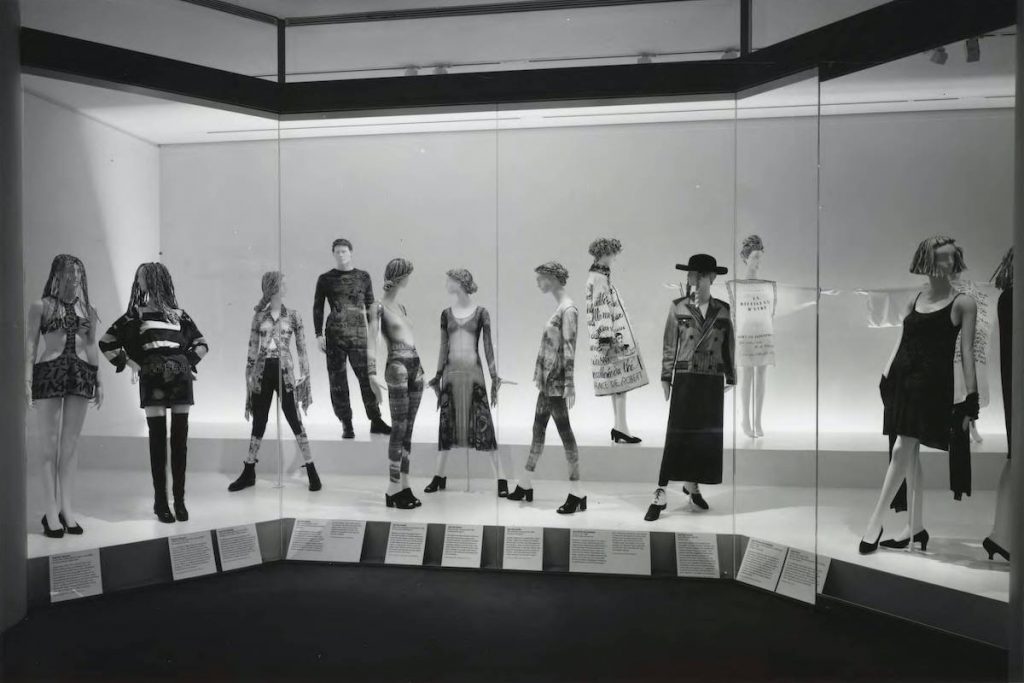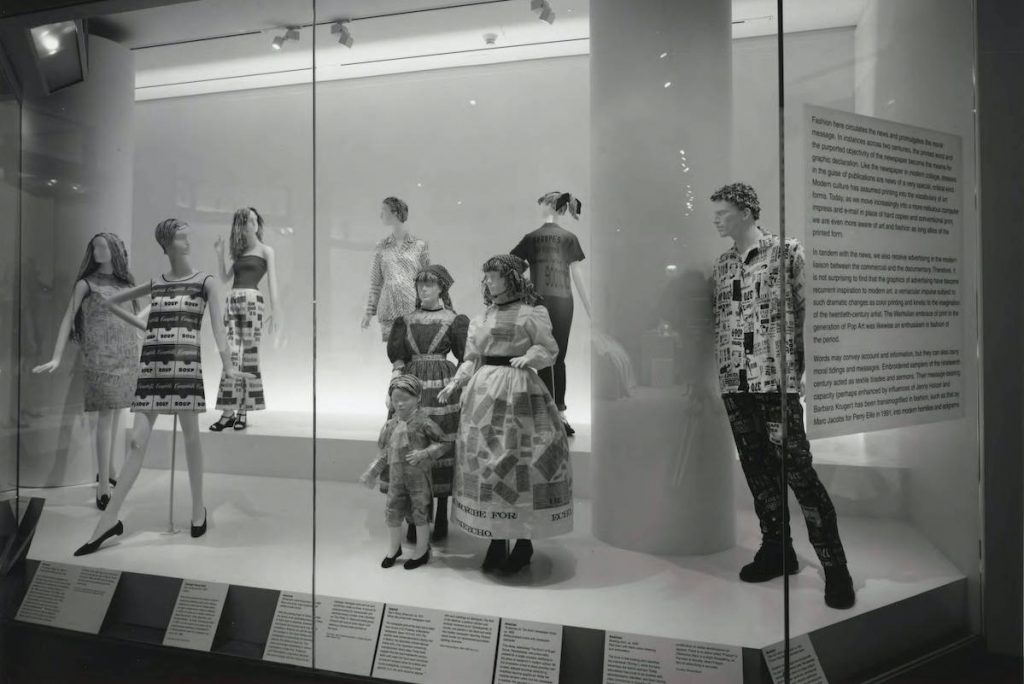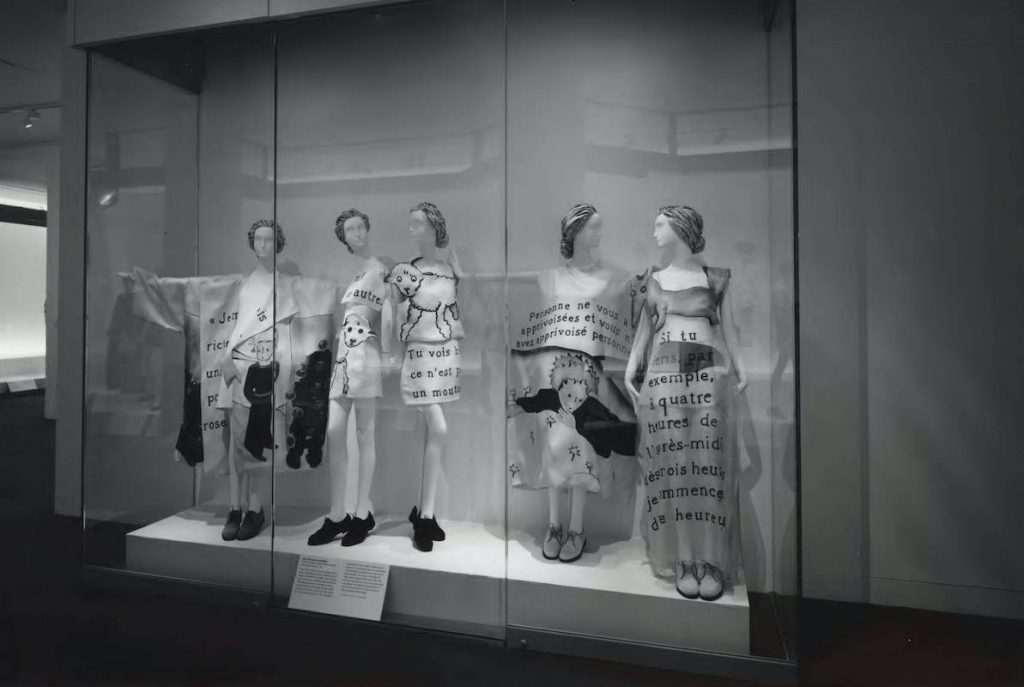Wordrobe
On the breast of her gown, in red cloth, surrounded with an elaborate embroidery and fantastic flourishes of gold-thread, appeared the letter A.
Nathaniel Hawthorne, The Scarlet Letter (1850)
Wardrobe is a reconciliation of textile and text. Textile and text are intrinsically and semantically related; both words derive from texere and text. Even today we use the locution weaving or spinning a tale to describe a powerful narrative. Apparel was not raised to grammar and rhetoric by Roland Barthes, but it has always been connected with and been an incorporating principle for language, constituting a knowledge of and inscription on the body. Fashion is not the mute, unversed art that some have imagined. On the contrary, like any other visual art, fashion is literate and intelligent, capable of conveying letters and linguistic form. In The Scarlet Letter, Hester Prynne’s identifying rune is allegorical, one among the many emblems and tokens that fashion carries. The July 1936 issue of Harper’s Bazaar refers to “Schiaparelli’s cellophane belt [which can be ordered] with your name and telephone number written on it.” Such an example is a sure sign of personal identity.
Images courtesy of Metropolitan Museum of Art



